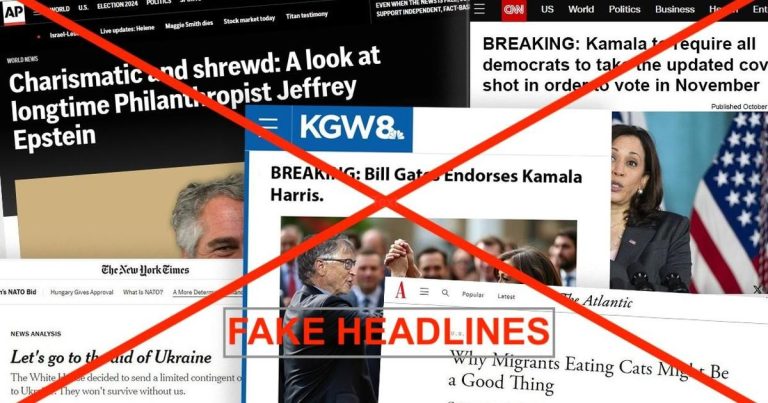Fake News Headlines Proliferate Online, Posing Threat to Informed Electorate
The digital age has ushered in an era of unprecedented information access, but this accessibility has also opened the floodgates to a torrent of misinformation, including fabricated news headlines designed to mislead and manipulate. A recent example involved a forged screenshot of an Atlantic headline falsely claiming Vice President Kamala Harris "may need to steal" the election, highlighting the potential for such fabrications to disrupt the democratic process. While this particular instance was debunked, it underscores a growing trend of fake news headlines targeting various topics, from political campaigns to international events. The ease with which these fake headlines can be created and disseminated poses a significant challenge to media literacy and the integrity of information online.
The proliferation of fake news isn’t limited to any specific political ideology or news outlet. Fabricated headlines mimicking respected publications like The New York Times, The Associated Press, CNN, and even local news sources have been circulating on social media platforms. These headlines often tackle sensitive and timely issues, capitalizing on current events to attract attention and sow discord. The lack of consistent labeling or warnings on social media further exacerbates the problem, allowing these fake headlines to reach millions of viewers unchecked. The sheer volume and speed at which this misinformation spreads makes it difficult for individuals to discern fact from fiction, potentially influencing public opinion and even electoral outcomes.
The amplification of fake news by influential figures, including politicians, celebrities, and social media personalities, adds another layer of complexity. When these individuals share fabricated content, it lends an undeserved air of credibility, reaching a wider audience and blurring the lines between legitimate news and disinformation. This practice, often driven by political agendas or a disregard for factual accuracy, undermines public trust in institutions and exacerbates existing societal divisions. Even Elon Musk, owner of X (formerly Twitter), has shared fabricated headlines, demonstrating the pervasiveness of the issue and the need for greater accountability from prominent figures online.
The challenge of identifying fake news extends beyond simply recognizing fabricated headlines. A recent study by MIT and Columbia University researchers revealed that even when presented with both a real and a fake news story, a significant portion of the public struggles to differentiate between the two. This highlights the sophisticated nature of some disinformation campaigns and the need for enhanced media literacy education. The ease with which misinformation can be created and disseminated at scale, coupled with the public’s difficulty in discerning fact from fiction, creates a fertile ground for manipulation and the spread of false narratives.
Combating the spread of fake news requires a multi-pronged approach. Individuals can take proactive steps to verify information by seeking out primary sources, checking for visual clues (e.g., pixelated images, inconsistent fonts), and gauging their emotional reactions to headlines designed to provoke outrage or fear. Cross-referencing information with reputable news outlets and maintaining a critical mindset while consuming online content are also crucial. However, individual efforts alone are insufficient. Social media platforms must implement more robust mechanisms for identifying and flagging fabricated content, while holding those who spread misinformation accountable.
The upcoming presidential election presents a particularly vulnerable period for the spread of disinformation. The “liar’s dividend,” as described by misinformation experts, refers to the potential for fabricated information to influence public opinion during critical periods, even after it has been debunked. The sheer volume of information circulating online, combined with heightened political tensions and the potential for foreign interference, creates a perfect storm for misinformation campaigns. Therefore, increased vigilance from individuals, media organizations, and social media platforms is essential to ensuring a fair and informed electoral process. Ultimately, safeguarding the integrity of information in the digital age requires a collective effort to promote media literacy, hold purveyors of misinformation accountable, and strengthen our defenses against the rising tide of fake news.


